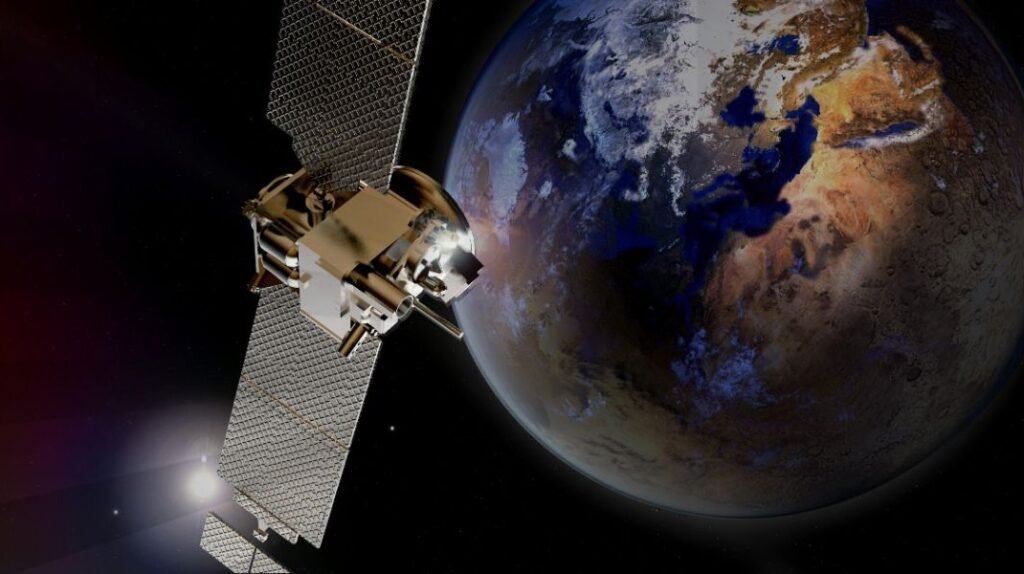The way we connect to the internet is changing fast. As demand for faster speeds, broader access, and more secure communication grows, traditional methods like fiber optics and radio frequency (RF) satellites are reaching their limits. Enter optical satellites — a powerful advancement that uses laser communication to deliver high-speed satellite data. These systems are not just a technological upgrade; they are laying the foundation for the future of internet connectivity.
Whether you live in a bustling city or a remote village, the rise of satellite-based internet promises to make fast and reliable online access a reality for everyone. So, what are optical satellites, and why are they gaining so much attention?
What Are Optical Satellites?

Optical satellites are space-based communication systems that use laser beams to transmit data between satellites or from space to Earth. Similar to how fiber optic cables use light to carry internet signals, optical satellites use focused beams of light for long-distance, high-capacity data transfer, but without any physical cables.
How Optical Communication Works
Data is encoded into pulses of light
Light is transmitted between optical terminals (on satellites or ground stations)
Receivers decode the light into usable data
This method of communication offers several advantages over conventional RF systems, especially in terms of speed, efficiency, and security.
Transforming Connectivity: The Impact of Optical Satellites

Optical satellites are transforming the landscape of global connectivity. As the world prepares for next-gen internet technologies, such as 6G, massive-scale IoT, and smart infrastructure, the need for faster and more reliable data transmission has never been greater. Here are some key benefits of optical satellites:
Ultra-fast speeds: Laser communication enables data transfer rates far higher than RF signals
Increased security: Laser beams are narrow and difficult to intercept, making them ideal for secure communication
Lower interference: Light beams don’t overlap like radio waves, leading to cleaner signals
Compact systems: Optical communication equipment is often smaller and lighter
Energy efficiency: These systems typically consume less power, making them cost-effective for long-term use
With such benefits, it's no surprise that optical satellites are seen as key to delivering high-speed satellite data across the globe.
Use Cases for the Next-Gen Internet

The applications of optical satellite communication go far beyond just faster browsing. These systems are designed to support the evolving digital world in practical and impactful ways.
Real-world Use Cases
6G and Smart Devices: Optical satellites support the low latency and high bandwidth required for 6G and connected devices
Remote Area Coverage: From mountain villages to oceanic routes, optical satellites bring satellite internet to rural USA and other hard-to-reach places
Telehealth and Education: Stable internet access enables virtual classrooms and remote medical consultations
Disaster Recovery: In the aftermath of natural disasters, optical satellites can restore the internet quickly when ground infrastructure is damaged
The role of optical satellites in the future internet is all about accessibility, speed, and reliability — essential components of modern digital life.
Industry Leaders and Real Projects
Several major players in the space and communication sectors are already investing heavily in optical satellite technology. Their projects give us a glimpse into the future of satellite-based internet services.
SpaceX Starlink: Has begun deploying inter-satellite laser links for faster global coverage
NASA: Projects like the Laser Communications Relay Demonstration (LCRD) are testing laser data transmission in orbit
Telesat Lightspeed: A Canadian company developing a laser-powered low Earth orbit (LEO) satellite network focused on enterprise and government use.
These organizations are helping to create a more connected world through innovations in laser communication and orbital infrastructure.
Market Opportunities and Satellite Internet Services
The shift toward optical satellites is opening up new business and service opportunities around the world. The demand for space internet providers and satellite internet services is growing, especially in regions where traditional infrastructure is lacking.
Emerging Opportunities
Residential Internet: High-speed internet delivered by satellite directly to homes
Enterprise Solutions: Dedicated connections for companies in remote or mobile operations
Government and Defense: Secure communications for sensitive missions
Transportation and Aviation: Reliable internet on planes, ships, and high-speed rail
More people are beginning to explore ways to buy satellite internet services, and the availability of optical satellite-based packages is expected to expand significantly in the next few years.
Challenges Optical Satellites Still Face
Despite the promise of optical satellites, there are still challenges that need to be addressed.
Some Ongoing Issues:
Weather dependency: Laser signals can be weakened by clouds, fog, or rain, affecting reliability
High costs: Building and launching optical satellite networks requires substantial investment
Orbital congestion: With so many LEO satellites being launched, managing space traffic is becoming a growing concern
Researchers and developers are working on solutions such as adaptive optics and AI-assisted signal routing to overcome these challenges.
What to Expect in the Next 5 Years
The future looks promising for optical satellites and the next-gen internet. As more networks go live, users can expect:
Expansion of satellite internet in underserved areas
Faster, more secure data services for both individuals and businesses
Growth in hybrid satellite systems that combine RF and optical technologies
Integration with terrestrial 5G and future 6G networks
These advancements will help optical satellites become a core part of global infrastructure, delivering reliable, high-speed connections anywhere on the planet.
Conclusion
Optical satellites are at the heart of the evolving internet landscape. By using laser communication, they offer a faster, more secure, and more scalable solution to the challenges of modern connectivity. As companies like SpaceX, NASA, and Telesat continue to develop and deploy these technologies, the world is moving closer to a future where access to the internet is truly global. Whether you're a student in a rural village, a business owner in an emerging market, or a space enthusiast watching the skies, optical satellites are shaping the future of how we all connect, communicate, and thrive online.







